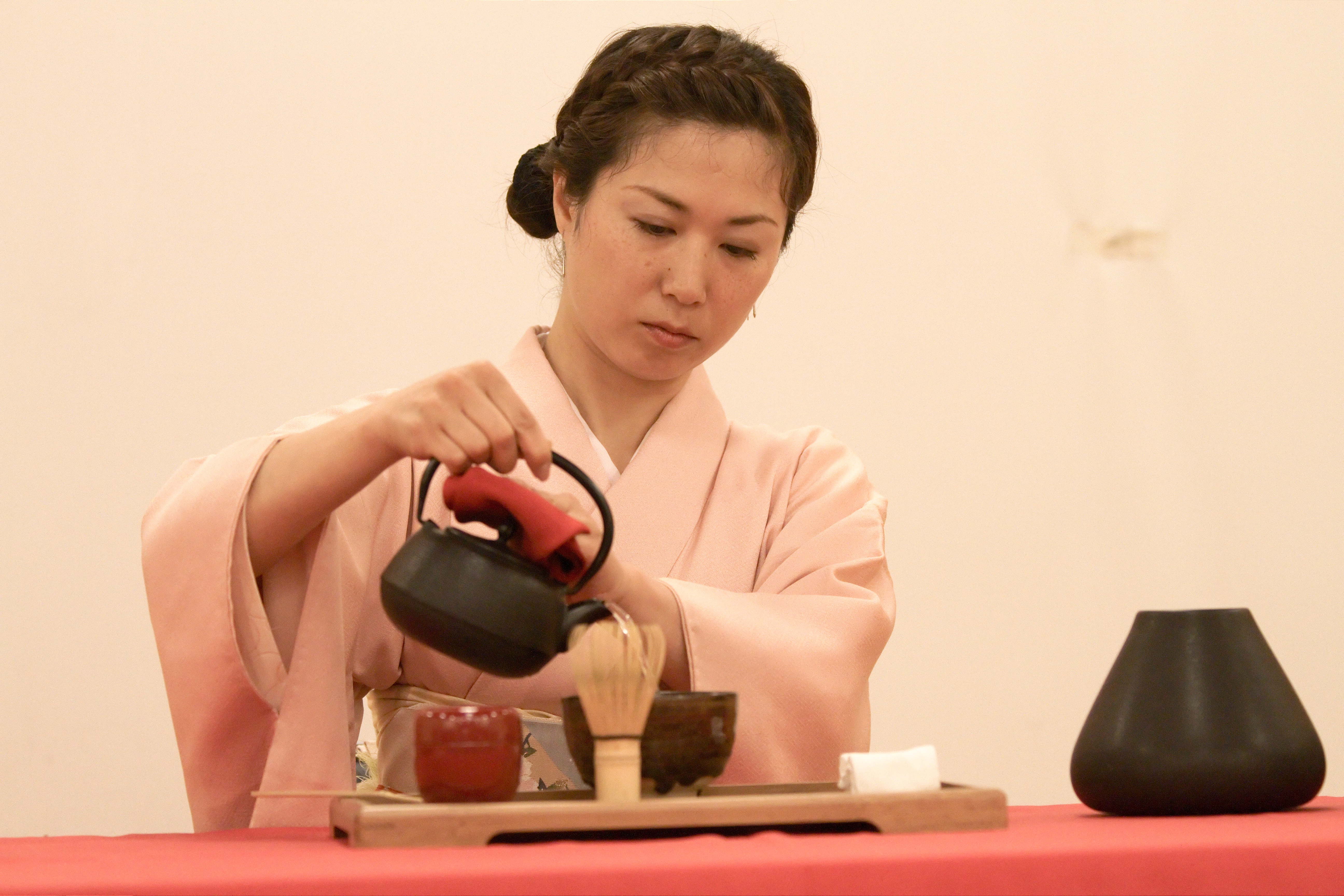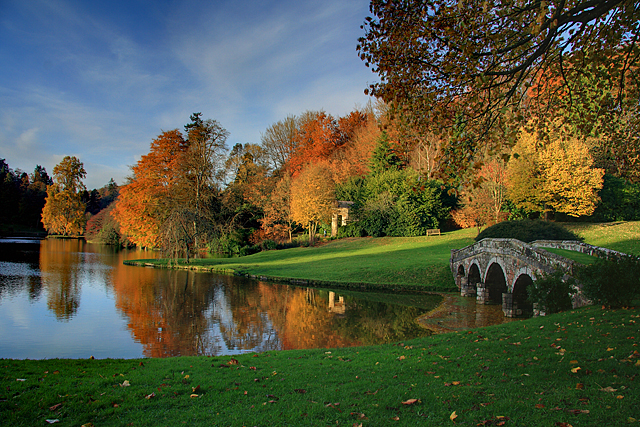|
Tea Garden
A tea garden is an outdoor space or garden where tea and light refreshments are served, or any garden with which the drinking of tea is associated. Especially in India, it is also a common term for a tea plantation. The tea garden was a part of early English commercial pleasure gardens; often parties of couples visited these, the men occupying themselves with lawn bowls and beer or wine, while the ladies went to the tea garden. In modern times it often means an outside area at a cafe or tearoom. In Japanese gardening, a ''roji'' is a particular style of relatively small garden, originally developed for the entry gardens to Japanese teahouses, intended to set the mood of guests arriving for the Japanese tea ceremony. These are designed almost exclusively to be seen from the path leading through them to the building, and tea would not normally be consumed in them. The style is suitable for smaller front gardens of houses, and has often been used for these, both in Japan and ... [...More Info...] [...Related Items...] OR: [Wikipedia] [Google] [Baidu] |
George Morland (1763-1804) - The Tea Garden - T00055 - Tate
George Morland (26 June 176329 October 1804) was an English painter. His early work was influenced by Francis Wheatley, but after the 1790s he came into his own style. His best compositions focus on rustic scenes: farms and hunting; smugglers and gypsies; and rich, textured landscapes informed by Dutch Golden Age painting. Much of his work was intended for reproduction in prints, from which his publishers made a good deal more money than he did. Despite being a heavy drinker who enjoyed a rackety lifestyle, he was enormously prolific, though the quality of his work increasingly suffered. After many troubles with debts in his last decade, he died at the age of 41. Biography George Morland was born in London on 26 June 1763. He was the son of Henry Robert Morland, and grandson of George Henry Morland, said by Cunningham to have been lineally descended from Sir Samuel Morland, while other biographers go so far as to say that he had only to claim the baronetcy in order to ge ... [...More Info...] [...Related Items...] OR: [Wikipedia] [Google] [Baidu] |
Front Garden
On a residential area, a front yard (United States, Canada, Australia) or front garden (United Kingdom, Europe) is the portion of land between the street and the front of the house. If it is covered in grass, it may be referred to as a front lawn. The area behind the house, usually more private, is the back yard or back garden. Yard and garden share an etymology and have overlapping meanings. In North America, front yards, which normally include considerable driveway and parking space, tend to be mostly lawn even when large, but in Europe they are often treated as a flower garden and may be heavily planted. In North American suburbia, there may be no physical barriers marking the front and sides of the plot, which would be very unusual in Europe, where there are generally walls, fences or hedges on three sides of the garden. Builfront yard sitting areain your front yard landscape and create a good impression with your relatives, neighbours and friends, you must design the front ... [...More Info...] [...Related Items...] OR: [Wikipedia] [Google] [Baidu] |
Tea Culture
Tea culture is defined by the way tea is made and consumed, by the way the people interact with tea, and by the aesthetics surrounding tea drinking. Tea plays an important role in some countries. It is commonly consumed at social events, and many cultures have created intricate formal ceremonies for these events. East Asian tea ceremonies, with their roots in the Chinese tea culture, differ slightly among East Asian countries, such as the Japanese or Korean variants. Tea may differ widely in preparation, such as in Tibet, where the beverage is commonly brewed with salt and butter. Tea may be drunk in small private gatherings ( tea parties) or in public (tea houses designed for social interaction). Afternoon tea is a British custom with widespread appeal. The British Empire spread its own interpretation of tea to its dominions and colonies, including modern-day regions of Hong Kong, India, and Pakistan, which had pre-existing tea customs, as well as regions such as East Afri ... [...More Info...] [...Related Items...] OR: [Wikipedia] [Google] [Baidu] |
British Tea Culture
Since the 18th century, the United Kingdom has been one of the world's largest tea consumers, with an average annual per capita supply of . Originally an upper-class drink in Europe, tea gradually spread through all classes, eventually becoming a common drink. It is still considered an important part of the British identityWoodruff D. Smith, "Complications of the Commonplace: Tea, Sugar, and Imperialism". ''Journal of Interdisciplinary History'' (Autumn 1992), 259–277. and is a prominent feature of British culture and society. In both the United Kingdom and the Republic of Ireland, tea-drinking blends and preferences vary. Although typically served with milk, it is also common to drink certain varieties black or with lemon. Sugar is a popular addition to any variety. Everyday tea, such as English breakfast tea, served in a mug with milk and sugar is a popular combination. Sandwiches, crumpets, scones, cake, or biscuits often accompany tea, which gave rise to the prominent Bri ... [...More Info...] [...Related Items...] OR: [Wikipedia] [Google] [Baidu] |
List Of Garden Types
A wide range of garden types exist. Below is a list of examples. By country of origin *Chinese garden ** Cantonese garden ** Sichuanese garden *Dutch garden * Egyptian garden *English garden **English landscape garden *French garden **French formal garden **French landscape garden **Gardens of the French Renaissance *German garden *Greek garden *Italian garden **Italian Renaissance garden *Japanese garden ** Japanese dry garden **Japanese tea garden **Tsubo-niwa *Korean garden *Persian garden **Charbagh **Paradise garden *Spanish garden ** Andalusian Patio *United States garden **Colonial Revival garden By historical empire * Byzantine gardens *Mughal gardens *Persian gardens *Roman gardens In religion * Bahá'í gardens *Biblical garden *Islamic garden *Mary garden * Sacred garden Other * Aquascaping * Back garden * Baroque garden *Bog garden *Bosquet *Botanical gardens **Alpine **Arboretum **Palmetum *Bottle garden *Butterfly gardening *Cactus garden *Charb ... [...More Info...] [...Related Items...] OR: [Wikipedia] [Google] [Baidu] |
Fine Gardening
''Fine Gardening'' is a magazine for gardening enthusiasts of all skill levels covering the basics of garden design with advice from horticulture experts and landscape professionals. The focus is more on ornamental plants and home landscaping rather than edible gardens. It is a bi-monthly publication of the Taunton Press published in the United States that accepts only gardening-related advertising. It is headquartered in Newtown, Connecticut. Contents Feature articles Most ''Fine Gardening'' articles are how-to or instructional in nature focusing on design, techniques, plants, or garden structure and are well illustrated. What makes ''Fine Gardening'' unique among gardening magazines is that the articles are written in the first person based on personal experience by home gardeners, horticulturists, and professional landscapers. Other regular departments Departments such as Super Cool Plants and Plant MD are generally written by horticulture experts. Reader-submitted content is ... [...More Info...] [...Related Items...] OR: [Wikipedia] [Google] [Baidu] |
Lavender
''Lavandula'' (common name lavender) is a genus of 47 known species of flowering plants in the mint family, Lamiaceae. It is native to the Old World and is found in Cape Verde and the Canary Islands, and from Europe across to northern and eastern Africa, the Mediterranean, southwest Asia to India. Many members of the genus are cultivated extensively in temperate climates as ornamental plants for garden and landscape use, for use as culinary herbs, and also commercially for the extraction of essential oils. The most widely cultivated species, ''Lavandula angustifolia'', is often referred to as lavender, and there is a color named for the shade of the flowers of this species. Lavender has been used over centuries in traditional medicine and cosmetics. Description Plant and leaves The genus includes annual or short-lived herbaceous perennial plants, and shrub-like perennials, subshrubs or small shrubs. Leaf shape is diverse across the genus. They are simple in some commonly cult ... [...More Info...] [...Related Items...] OR: [Wikipedia] [Google] [Baidu] |
Lemon Balm
Lemon balm (''Melissa officinalis'') is a perennial herbaceous plant in the mint family and native to south-central Europe, the Mediterranean Basin, Iran, and Central Asia, but now naturalised elsewhere. It grows to a maximum height of . The leaves have a mild lemon scent. During summer, small white flowers full of nectar appear. It is not to be confused with bee balm (genus ''Monarda''), although the white flowers attract bees, hence the genus ''Melissa'' (Greek for "honey bee"). The leaves are used as a herb, in teas and also as a flavouring. The plant is used to attract bees for honey production. It is grown as an ornamental plant and for its oil (to use in perfumery). Lemon balm has been cultivated at least since the 16th century. Description Lemon balm (''Melissa officinalis'') is a perennial herbaceous plant in the mint family Lamiaceae, and native to south-central Europe, the Mediterranean Basin, Iran, and Central Asia, but now naturalized in the Americas and elsewh ... [...More Info...] [...Related Items...] OR: [Wikipedia] [Google] [Baidu] |
Peppermint
Peppermint (''Mentha'' × ''piperita'') is a hybrid species of mint, a cross between watermint and spearmint. Indigenous to Europe and the Middle East, the plant is now widely spread and cultivated in many regions of the world.Euro+Med Plantbase Project''Mentha'' × ''piperita''/ref> It is occasionally found in the wild with its parent species.Flora of NW Europe''Mentha'' × ''piperita'' Although the genus ''Mentha'' comprises more than 25 species, the one in most common use is peppermint. While Western peppermint is derived from ''Mentha × piperita'', Chinese peppermint, or ''bohe'', is derived from the fresh leaves of ''M. haplocalyx''. ''M. × piperita'' and ''M. haplocalyx'' are both recognized as plant sources of menthol and menthone, and are among the oldest herbs used for both culinary and medicinal products. Botany Peppermint was first described in 1753 by Carl Linnaeus from specimens that had been collected in England; he treated it as a species,Linnaeus, C. (17 ... [...More Info...] [...Related Items...] OR: [Wikipedia] [Google] [Baidu] |
Monarda
''Monarda'' is a genus of flowering plants in the mint family, Lamiaceae.Harley, R. M., et al. 2004. "Labiatae". pp 167-275 In: Kubitzki, K. (editor) and J. W. Kadereit (volume editor). ''The Families and Genera of Vascular Plants'' volume VII. Springer-Verlag: Berlin; Heidelberg, Germany. The genus is endemic to North America. Common names include bergamot, bee balm, horsemint, and oswego tea, the first being inspired by the fragrance of the leaves, which is reminiscent of bergamot orange (''Citrus bergamia''). The genus was named for the Spanish botanist Nicolás Monardes, who wrote a book in 1574 describing plants of the New World. Description ''Monarda'' species include annual and perennial herbaceous plants. They grow erect to heights of . The slender, serrated, lanceolate leaves are oppositely arranged on the square stem, hairless or sparsely hairy, and about 7 to 14 centimeters long. The flowers are tubular and bilaterally symmetric, with a narrow upper lip and a wi ... [...More Info...] [...Related Items...] OR: [Wikipedia] [Google] [Baidu] |
Chamomile
Chamomile (American English) or camomile (British English; see spelling differences) ( or ) is the common name for several plants of the family Asteraceae. Two of the species, ''Matricaria recutita'' and ''Anthemis nobilis'', are commonly used to make herbal infusions for beverages. There is insufficient scientific evidence that consuming chamomile in foods or beverages has any beneficial effects on health. Etymology The word ''chamomile'' is derived via the French and Latin, from the Greek grc, χαμαίμηλον, khamaimēlon, earth apple, label=none, from grc, χαμαί, khamai, on the ground, label=none, and grc, μῆλον, mēlon, apple, label=none. First used in the 13th century, the spelling ''chamomile'' corresponds to the Latin and the Greek . The spelling ''camomile'' is a British derivation from the French. Species Some commonly used species include: * ''Matricaria chamomilla'' – often called "German chamomile" or "Water of Youth" * ''Chamaemelum ... [...More Info...] [...Related Items...] OR: [Wikipedia] [Google] [Baidu] |
Herb
In general use, herbs are a widely distributed and widespread group of plants, excluding vegetables and other plants consumed for macronutrients, with savory or aromatic properties that are used for flavoring and garnishing food, for medicinal purposes, or for fragrances. Culinary use typically distinguishes herbs from spices. ''Herbs'' generally refers to the leafy green or flowering parts of a plant (either fresh or dried), while ''spices'' are usually dried and produced from other parts of the plant, including seeds, bark, roots and fruits. Herbs have a variety of uses including culinary, medicinal, aromatic and in some cases, spiritual. General usage of the term "herb" differs between culinary herbs and medicinal herbs; in medicinal or spiritual use, any parts of the plant might be considered as "herbs", including leaves, roots, flowers, seeds, root bark, inner bark (and cambium), resin and pericarp. The word "herb" is pronounced in Commonwealth English, but is common am ... [...More Info...] [...Related Items...] OR: [Wikipedia] [Google] [Baidu] |
_-_The_Tea_Garden_-_T00055_-_Tate.jpg)





.jpg)
